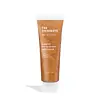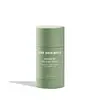What's inside
What's inside
 Key Ingredients
Key Ingredients

 Benefits
Benefits

 Concerns
Concerns

No concerns
 Ingredients Side-by-side
Ingredients Side-by-side

Water
Skin ConditioningButylene Glycol
HumectantGlycerin
HumectantNiacinamide
SmoothingTriethanolamine
Buffering1,2-Hexanediol
Skin ConditioningCarbomer
Emulsion StabilisingTranexamic Acid
AstringentAllantoin
Skin ConditioningGlutathione
Sodium Hyaluronate
HumectantRosa Damascena Flower
Skin ConditioningAscorbic Acid
AntioxidantPhenoxyethanol
PreservativeHouttuynia Cordata Extract
Skin ConditioningCentella Asiatica Extract
CleansingPEG-40 Hydrogenated Castor Oil
EmulsifyingHydroxyacetophenone
AntioxidantBletilla Striata Root Extract
Skin ConditioningAmpelopsis Japonica Root Extract
Skin ConditioningTribulus Terrestris Extract
Skin ConditioningPaeonia Lactiflora Root Extract
Skin ConditioningDictamnus Dasycarpus Root Extract
Skin ConditioningPoria Cocos Extract
Skin ConditioningAtractylodes Macrocephala Root Extract
Skin ConditioningRosa Moschata Seed Oil
EmollientVitis Vinifera Fruit Extract
Skin ConditioningCI 16255
Cosmetic ColorantCI 42090
Cosmetic ColorantCI 15985
Cosmetic ColorantWater, Butylene Glycol, Glycerin, Niacinamide, Triethanolamine, 1,2-Hexanediol, Carbomer, Tranexamic Acid, Allantoin, Glutathione, Sodium Hyaluronate, Rosa Damascena Flower, Ascorbic Acid, Phenoxyethanol, Houttuynia Cordata Extract, Centella Asiatica Extract, PEG-40 Hydrogenated Castor Oil, Hydroxyacetophenone, Bletilla Striata Root Extract, Ampelopsis Japonica Root Extract, Tribulus Terrestris Extract, Paeonia Lactiflora Root Extract, Dictamnus Dasycarpus Root Extract, Poria Cocos Extract, Atractylodes Macrocephala Root Extract, Rosa Moschata Seed Oil, Vitis Vinifera Fruit Extract, CI 16255, CI 42090, CI 15985
Water
Skin ConditioningKaolin
AbrasiveButylene Glycol
HumectantGlycerin
HumectantPropylene Glycol
HumectantDiatomaceous Earth
AbrasiveSodium Stearate
CleansingTitanium Dioxide
Cosmetic ColorantPEG-8
HumectantVp/Va Copolymer
CI 77288
Cosmetic ColorantSilica
AbrasiveCharcoal
AbrasiveCI 77492
Cosmetic ColorantMica
Cosmetic ColorantAlumina
AbrasiveChlorphenesin
AntimicrobialNiacinamide
SmoothingSalicylic Acid
MaskingArtemisia Argyi Leaf Extract
Skin ConditioningParfum
MaskingMenthol
MaskingCentella Asiatica Extract
CleansingPropanediol
Solvent1,2-Hexanediol
Skin ConditioningZinc PCA
HumectantNymphaea Caerulea Flower Water
Skin ConditioningLactobacillus/Rice Ferment
Skin ConditioningSalix Alba Bark Extract
AstringentBisabolol
MaskingPropolis Extract
Skin ConditioningCalendula Officinalis Flower Extract
MaskingCaprylhydroxamic Acid
Water, Kaolin, Butylene Glycol, Glycerin, Propylene Glycol, Diatomaceous Earth, Sodium Stearate, Titanium Dioxide, PEG-8, Vp/Va Copolymer, CI 77288, Silica, Charcoal, CI 77492, Mica, Alumina, Chlorphenesin, Niacinamide, Salicylic Acid, Artemisia Argyi Leaf Extract, Parfum, Menthol, Centella Asiatica Extract, Propanediol, 1,2-Hexanediol, Zinc PCA, Nymphaea Caerulea Flower Water, Lactobacillus/Rice Ferment, Salix Alba Bark Extract, Bisabolol, Propolis Extract, Calendula Officinalis Flower Extract, Caprylhydroxamic Acid
 Reviews
Reviews

Ingredients Explained
These ingredients are found in both products.
Ingredients higher up in an ingredient list are typically present in a larger amount.
1,2-Hexanediol is a synthetic liquid and another multi-functional powerhouse.
It is a:
- Humectant, drawing moisture into the skin
- Emollient, helping to soften skin
- Solvent, dispersing and stabilizing formulas
- Preservative booster, enhancing the antimicrobial activity of other preservatives
Butylene Glycol (or BG) is used within cosmetic products for a few different reasons:
Overall, Butylene Glycol is a safe and well-rounded ingredient that works well with other ingredients.
Though this ingredient works well with most skin types, some people with sensitive skin may experience a reaction such as allergic rashes, closed comedones, or itchiness.
Learn more about Butylene GlycolCentella Asiatica Extract (Centella) is derived from an herb native to Southeast Asia. It is famous for its anti-inflammatory and soothing properties.
Centella is rich in antioxidants and amino acids, such as Madecassic Acid and Asiaticoside.
Studies show the compounds in centella help with:
The combination of all these properties makes centella effective at soothing, hydrating, and protecting the skin.
Other great components of centella include Vitamin A, vitamin C, several B vitamins, and Asiatic Acid.
Fun fact: Centella has been used as a medicine and in food for many centuries. As a medicine, it is used to treat burns, scratches, and wounds.
Learn more about Centella Asiatica ExtractGlycerin is already naturally found in your skin. It helps moisturize and protect your skin.
A study from 2016 found glycerin to be more effective as a humectant than AHAs and hyaluronic acid.
As a humectant, it helps the skin stay hydrated by pulling moisture to your skin. The low molecular weight of glycerin allows it to pull moisture into the deeper layers of your skin.
Hydrated skin improves your skin barrier; Your skin barrier helps protect against irritants and bacteria.
Glycerin has also been found to have antimicrobial and antiviral properties. Due to these properties, glycerin is often used in wound and burn treatments.
In cosmetics, glycerin is usually derived from plants such as soybean or palm. However, it can also be sourced from animals, such as tallow or animal fat.
This ingredient is organic, colorless, odorless, and non-toxic.
Glycerin is the name for this ingredient in American English. British English uses Glycerol/Glycerine.
Learn more about GlycerinNiacinamide is a multitasking form of vitamin B3 that strengthens the skin barrier, reduces pores and dark spots, regulates oil, and improves signs of aging.
And the best part? It's gentle and well-tolerated by most skin types, including sensitive and reactive skin.
You might have heard of "niacin flush", or the reddening of skin that causes itchiness. Niacinamide has not been found to cause this.
In very rare cases, some individuals may not be able to tolerate niacinamide at all or experience an allergic reaction to it.
If you are experiencing flaking, irritation, and dryness with this ingredient, be sure to double check all your products as this ingredient can be found in all categories of skincare.
When incorporating niacinamide into your routine, look out for concentration amounts. Typically, 5% niacinamide provides benefits such as fading dark spots. However, if you have sensitive skin, it is better to begin with a smaller concentration.
When you apply niacinamide to your skin, your body converts it into nicotinamide adenine dinucleotide (NAD). NAD is an essential coenzyme that is already found in your cells as "fuel" and powers countless biological processes.
In your skin, NAD helps repair cell damage, produce new healthy cells, support collagen production, strengthen the skin barrier, and fight environmental stressors (like UV and pollution).
Our natural NAD levels start to decline with age, leading to slower skin repair, visible aging, and a weaker skin barrier. By providing your skin niacinamide, you're recharging your skin's NAD levels. This leads to stronger, healthier, and younger looking skin.
Another name for vitamin B3 is nicotinamide. This vitamin is water-soluble and our bodies don't store it. We obtain Vitamin B3 from either food or skincare. Meat, fish, wheat, yeast, and leafy greens contain vitamin B3.
The type of niacinamide used in skincare is synthetically created.
Learn more about NiacinamideWater. It's the most common cosmetic ingredient of all. You'll usually see it at the top of ingredient lists, meaning that it makes up the largest part of the product.
So why is it so popular? Water most often acts as a solvent - this means that it helps dissolve other ingredients into the formulation.
You'll also recognize water as that liquid we all need to stay alive. If you see this, drink a glass of water. Stay hydrated!
Learn more about Water